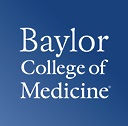Publication Date
2016
Journal
Advances in Experimental Medicine and Biology, vol. 854
DOI
10.1007/978-3-319-17121-0_26
PMID
26427411
PMCID
4906966
PubMedCentral® Posted Date
6-14-2016
PubMedCentral® Full Text Version
Author MSS
Published Open-Access
no
Keywords
Base Sequence, Chromosomes, Human, Pair 10, DNA Mutational Analysis, Exome, Family Health, Female, Genes, Dominant, Genetic Predisposition to Disease, Genotype, Haplotypes, Hexokinase, High-Throughput Nucleotide Sequencing, Humans, Male, Mutation, Missense, Pedigree, Retinitis Pigmentosa, Sequence Homology, Nucleic Acid
Abstract
Whole-genome linkage mapping identified a region on chromosome 10q21.3-q22.1 with a maximum LOD score of 3.0 at 0 % recombination in a six-generation family with autosomal dominant retinitis pigmentosa (adRP). All known adRP genes and X-linked RP genes were excluded in the family by a combination of methods. Whole-exome next-generation sequencing revealed a missense mutation in hexokinase 1, HK1 c.2539G > A, p.Glu847Lys, tracking with disease in all affected family members. One severely-affected male is homozygous for this region by linkage analysis and has two copies of the mutation. No other potential mutations were detected in the linkage region nor were any candidates identified elsewhere in the genome. Subsequent testing detected the same mutation in four additional, unrelated adRP families, for a total of five mutations in 404 probands tested (1.2 %). Of the five families, three are from the Acadian population in Louisiana, one is French Canadian and one is Sicilian. Haplotype analysis of the affected chromosome in each family and the homozygous individual revealed a rare, shared haplotype of 450 kb, suggesting an ancient founder mutation. HK1 is a widely-expressed gene, with multiple, abundant retinal transcripts, coding for hexokinase 1. Hexokinase catalyzes phosphorylation of glucose to glusose-6-phospate, the first step in glycolysis. The Glu847Lys mutation is in a highly-conserved site, outside of the active site or known functional sites.
Included in
Genetics and Genomics Commons, Medicine and Health Sciences Commons, Molecular Biology Commons


